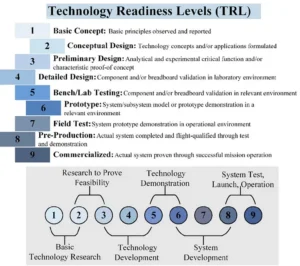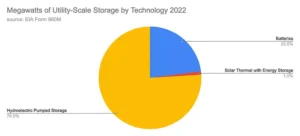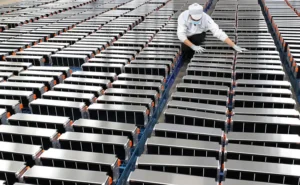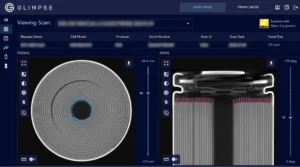This article is contributed by Peter Attia, Cofounder and CTO at Glimpse
- Battery quality is among the most difficult issues facing the industry today due to the complexity of both battery failure and gigawatt-hour-scale battery production. Yet the human, environmental, financial, and reputational stakes are enormous. The challenge of battery quality deserves much more academic, industrial, and regulatory focus.
- Our industry needs a clear view of the tradeoffs intrinsic to battery quality control, such as performance vs. quality. In reality, battery quality must be considered alongside conventional design metrics such as energy and cost.
- Improved inspection techniques are a promising path forward for battery quality control. While many techniques have a role to play, 3D X-ray imaging, or computed tomography (CT), is especially promising due to its non-destructive nature, high spatial resolution, and potential for scalability. Our startup, Glimpse, is transforming this technique from an R&D technique to a production-grade tool.
Introduction
This article is largely based on our arXiv preprint, available here.
Despite the incredible momentum of lithium-ion batteries in the past five years, three major challenges loom over the industry:
- Safety: Battery safety events can have massive human, environmental, and financial consequences.
- Reliability: The punishing physics of battery pack reliability, in which one defective cell can cause the entire pack to fail (Figure 1), adds an extra 2–3 orders of magnitude to cell-level reliability targets.
- Manufacturability: Producing cells at the gigawatt-hour scale with high yield, throughput, and profitability and while avoiding micron-scale defects is extraordinarily difficult (see here, here, and here).

These three challenges have a common theme: battery quality. Among the various obstacles facing the battery industry, ensuring high battery quality may be the greatest barrier to accelerating battery production in the years to come. In this article, we’ll first define battery quality and related concepts such as battery failure and reliability. Then, we’ll discuss the available battery quality control options for cell producers and OEMs. Finally, we’ll outline one approach that our startup, Glimpse, sees for this problem.
Defining battery quality and failure
Before we dive into battery quality, let’s first spend some time describing battery failure. Figure 2 displays a “taxonomy” of battery failure with three severity levels:
- First, performance degradation is often caused by (electro)chemical side reactions that consume lithium or degrade electrode material, resulting in diminished cell performance. While performance degradation is certainly an issue that deserves further attention, especially for new battery chemistries, customers do expect some level of performance degradation in their devices. Capacity fade itself is not itself an existential threat to the success of the battery industry.
- Second, functional failures are often caused by mechanical or contamination issues, such as tab tearing, metallic contaminants, or lithium plating. These issues can cause cells to exhibit open-circuit failure, short-circuit failure, or severely diminished performance, thus rendering the cell unable to meet its functional requirements.
- Finally, safety events can arise from a variety of root causes, most notably functional failure such as internal shorting but also external initiation events (e.g., a car crash) and casing/seal failure. Safety events can lead to bodily harm, property damage, and even environmental hazards.

While this figure illustrates how complicated and intertwined battery failure can be, two conclusions are straightforward:
- Functional failure and safety events are the biggest threats to the battery industry, much more than performance degradation.
- Battery quality is the predominant root cause for both of these categories of failure.
Now, let’s discuss battery quality. One definition of battery quality is having a low rate of defects. Battery defects can occur in all sorts of flavors (Figure 3), and these defects can lead to open-circuit failure or short-circuit failure, which is much more concerning because internal short circuits are a prominent root cause of thermal runaway.
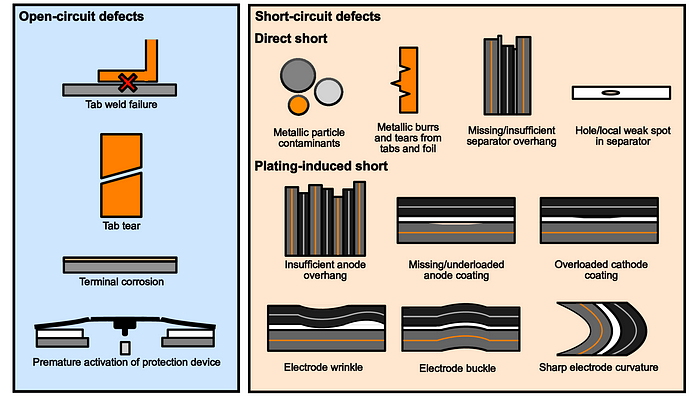
A key point is that many of these defects are “latent” defects. While latent defects are present from the start, they only activate during cell operation. A classic example is metallic particle contaminants, which are introduced during cell production but only cause an internal short after the particle has punctured the separator. Critically, these defects will have no electrochemical signature until the short. Thus, non-electrochemical techniques are needed to detect these defects if we want to catch them before they happen. Latent defects are not unlike cancerous tumors, which are asymptomatic until they’ve grown large enough to cause major problems.
The second definition of battery quality is conformance, commonly referred to as cell-to-cell variability. Under this definition, poor quality means that the as-built cells deviate substantially from their design. This definition of battery quality is more general since it can include dimensional specifications and electrochemical properties as well as the lack of physical defects.
Poor conformance has a number of impacts on the final product. First, poor conformance is simply a warning sign that the process control in production is poor. Second, because battery failure is so sensitive, a batch of batteries with poor conformance will likely have a large spread in cycle life — which also makes cell testing and failure analysis more difficult and expensive. Third, because packs are often limited by the weakest cell, the battery pack may not be using all of its available energy. Fourth, poor conformance can lead to pack balancing issues. Finally, high cell-to-cell variability may limit how aggressive your cell design can be. The bottom line is that improving conformance can yield a number of benefits for a battery pack.
Battery quality control in the real world
We’ve established that battery quality is a problem. As in all manufacturing processes, the solution is battery quality control. While battery quality control is a multifaceted problem worthy of its own article, a key element is inspection. Battery inspection techniques can identify process failures before defective cells leave the factory and provide a snapshot into manufacturing performance. In short, better inspection has a critical role to play in solving the battery quality challenge.
A key consideration in inspection for battery quality control is which techniques to use. Table I lists common battery quality inspection techniques and some of their most important features.
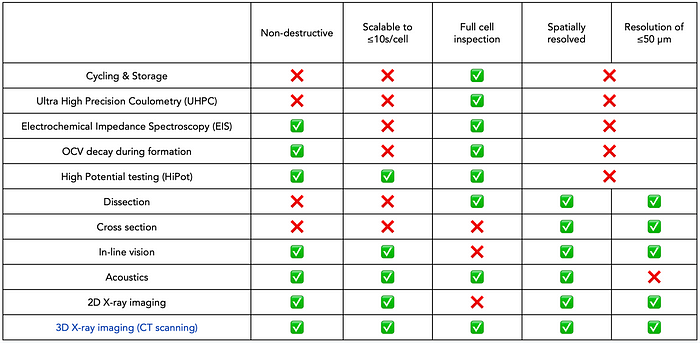
Again, all of these techniques have a role to play in battery quality inspection. However, there is only one technique that checks all of these boxes: 3D X-ray imaging, or computed tomography (CT) scanning.
Barriers to high-throughput CT scanning
CT scanning is not a new technology: it was invented around 1970 and awarded the Nobel Prize in 1979. You’ve probably heard this technique referred to as CAT scanning in a medical context; CT is also used for airport security screening. In a nutshell, a CT works by “reconstructing” a series of 2D X-ray images into a 3D volume that represents the original object.
Battery CT scans are nothing new: many papers, such as those from Prof. Paul Shearing’s lab and Exponent, have covered this topic. However, these papers mostly use CT in an R&D or failure analysis context; the most common type of study is to periodically scan cells over the course of a cycling experiment. While these studies can yield fantastic insights, the standard workflow for CT in these use cases does not scale to high-throughput production. Specifically, high-throughput battery CT today faces two limitations: scan time and analysis time.
Historically, CT scans have taken a couple of hours per cell. These slow scan times can be attributed to a number of factors. First, CT is a complicated characterization technique with many optimizable parameters. Analogous to photography, a serviceable image can be provided with just a basic understanding of the technique, but the acquisition hardware, acquisition parameters, and software enhancements can also be endlessly tuned to obtain “the perfect shot.” Additionally, both techniques require specialized expertise to understand and evaluate key imaging metrics such as noise, contrast, sharpness, and the severity of artifacts. Cell engineering organizations, typically more focused on battery electrochemistry and manufacturing, often lack the specialized expertise required for these types of decisions. Lastly, the high capital cost of CT equipment can lead to cell engineers choosing suboptimal hardware for their needs.
The other main bottleneck is analysis time. Analysis time has not traditionally been a major bottleneck because, if a CT scan takes a few hours, scan time tends to be the limiting factor. However, as scan times decrease to minutes or even seconds and the volume of scans increases correspondingly, the time spent to analyze each scan becomes more and more significant. Moreover, the conventional CT scan analysis workflow is quite slow and painful. Given that a high-resolution CT scan of a 2170 cell can be 100s of GB, even transferring that data can be a challenge, and the typical workflow today requires expensive software on an expensive computer just to take the equivalent of a couple of screenshots. With limited access to the instrument, software, and computing resources, only a few engineers end up with the training to perform CT analysis, which inevitably bottlenecks the engineering organization’s ability to understand and improve cell quality.
Glimpse’s approach
Our startup, Glimpse, is focused on decreasing both the scan time and analysis time to transform CT from a low-volume lab instrument to a high-volume production tool. In a nutshell, Glimpse’s goal is to reduce the “time to insights” for CT scanning; in fact, “time to insights” is our primary performance metric for making engineering decisions.
Glimpse focuses on three key elements to drive down scan time while maintaining high image quality: optimized CT hardware (e.g., X-ray source, X-ray detector), optimized scan recipes (sample positioning, projection counts, exposure times), and image enhancement (software-based image processing techniques such as corrections and denoising). The image enhancement is a core part of Glimpse’s secret sauce. As a result of these optimizations, Glimpse’s standard cylindrical cell scans take only two minutes while maintaining high image quality. Our next-generation, battery-specific CT hardware that we are co-designing with our partners will drive scan times down to 10–20 seconds. Again, since scan time and image quality are always in tension, Glimpse will provide a bleeding-edge Pareto front of options from which our customers can select the tradeoff that best fits their needs.
Glimpse’s analysis workflow is designed for speed and scale. With Glimpse, you can scan as many cells as you’d like with our high-throughput scanning workflow. Then, we automatically process the data using our image processing/computer vision algorithms to both improve image quality and extract key features (e.g., overhang measurements, defect detection). Finally, you and your colleagues can view this data interactively on the Glimpse web app (aka the Glimpse Portal™; Figures 4 and 5) so that your entire organization can collaboratively understand the root causes of battery defects and variability and thus improve battery quality.
To showcase our capabilities, we scanned over a thousand cells and added them to the Portal™. You can check them out at https://app.glimp.se. We have also published the dataset here — we hope this dataset serves as a valuable resource for the battery community.
Glimpse offers two products. The first (“Scan on Demand”) is simple: Send your cells to us in Boston and we’ll scan them, host the data on the Portal, and then send your cells back. This model is most suitable for smaller customers who don’t need a scanner on-site. The second model is On-Premise Scanning, where we deploy a hardware and software solution to meet your battery inspection needs. And while this article primarily addresses the high-throughput manufacturing use case, we believe that CT is useful throughout the battery life cycle — from early-stage R&D to pilot production, end-of-line outgoing quality control, incoming quality control before pack assembly, fleet failure analysis, and even second-life evaluation. If we might be able to help you, let us know here!

